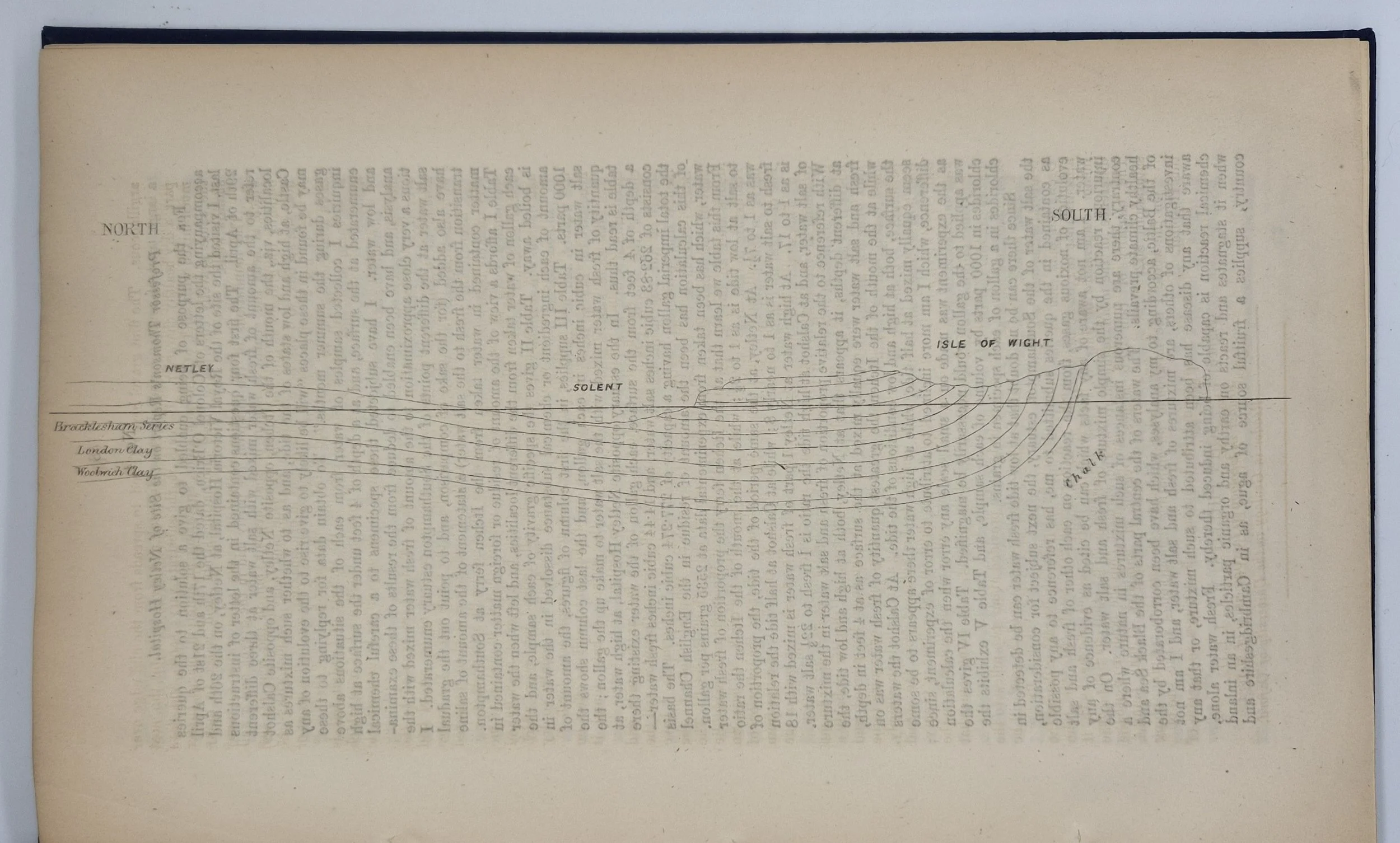 Image 1 of 2
Image 1 of 2

 Image 2 of 2
Image 2 of 2



Report on the Site, &c., of the Royal Victoria Hospital, near Netley Abbey. Presented to the House of Commons by Command of Her Majesty, 1858
[NIGHTINGALE, Florence, et. al.]
Report on the Site, &c., of the Royal Victoria Hospital, near Netley Abbey. Presented to the House of Commons by Command of Her Majesty, 1858
London: Harrison and Sons, 1858
Small folio (21 x 33cm approx); bound in full navy blue cloth, lettered in gilt to spine, with pale yellow endpapers; pp. [iii], 2-190; Nightingale’s contributions appearing from p. 26 onwards; containing numerous tables and diagrams; a very good copy, some small stains and scuffs to covers; the first few pages with corner chip at head; title page sometime reinforced with archival tape; short closed tear to foot of p. 2 repaired with tape; the diagram of the Solent on p. 57 beginning to come loose at foot; else a clean example; with the library stamp of the Royal College of Surgeons to title page and p. [iii], sold here with their knowledge and approval.
A genuinely rare copy of the original report concerning the building of the controversial Netley Hospital in Hampshire.
It was in the 1850s that Queen Victoria, moved by the work of Florence Nightingale in Scutari during the Crimean war, and pressured by both the public and the British Government to take action, sanctioned the building of a purpose-built hospital in the once-quiet village of Netley, Hampshire. Its intention was to care for sick and injured soldiers returning from conflict, and it was to be built on the banks of the Solent, but in 1856, after Lord Panmure had sent the plans to Nightingale for comment, the building became the subject of major discussion after she raised concerns surrounding the old ‘corridor’ system and waterside location of the site, claiming that these were major health hazards. Additional issues raised by her here include the size of the wards, the lack of ventilation, and the necessity of light. Eventually, despite her pleading with Lord Palmerson to halt the construction, her concerns were overruled on grounds of cost, and the war office began building in line with the original plans.
The hospital finally opened in 1863, with far less parade than originally intended. Almost quarter of a mile long and costing almost £350,000, it included the addition of an Army Medical School, and a group of female military nurses not included in the original plans. It was operational for almost one hundred years until its demolition in 1966.
3 only copies located on Worldcat.
[NIGHTINGALE, Florence, et. al.]
Report on the Site, &c., of the Royal Victoria Hospital, near Netley Abbey. Presented to the House of Commons by Command of Her Majesty, 1858
London: Harrison and Sons, 1858
Small folio (21 x 33cm approx); bound in full navy blue cloth, lettered in gilt to spine, with pale yellow endpapers; pp. [iii], 2-190; Nightingale’s contributions appearing from p. 26 onwards; containing numerous tables and diagrams; a very good copy, some small stains and scuffs to covers; the first few pages with corner chip at head; title page sometime reinforced with archival tape; short closed tear to foot of p. 2 repaired with tape; the diagram of the Solent on p. 57 beginning to come loose at foot; else a clean example; with the library stamp of the Royal College of Surgeons to title page and p. [iii], sold here with their knowledge and approval.
A genuinely rare copy of the original report concerning the building of the controversial Netley Hospital in Hampshire.
It was in the 1850s that Queen Victoria, moved by the work of Florence Nightingale in Scutari during the Crimean war, and pressured by both the public and the British Government to take action, sanctioned the building of a purpose-built hospital in the once-quiet village of Netley, Hampshire. Its intention was to care for sick and injured soldiers returning from conflict, and it was to be built on the banks of the Solent, but in 1856, after Lord Panmure had sent the plans to Nightingale for comment, the building became the subject of major discussion after she raised concerns surrounding the old ‘corridor’ system and waterside location of the site, claiming that these were major health hazards. Additional issues raised by her here include the size of the wards, the lack of ventilation, and the necessity of light. Eventually, despite her pleading with Lord Palmerson to halt the construction, her concerns were overruled on grounds of cost, and the war office began building in line with the original plans.
The hospital finally opened in 1863, with far less parade than originally intended. Almost quarter of a mile long and costing almost £350,000, it included the addition of an Army Medical School, and a group of female military nurses not included in the original plans. It was operational for almost one hundred years until its demolition in 1966.
3 only copies located on Worldcat.

